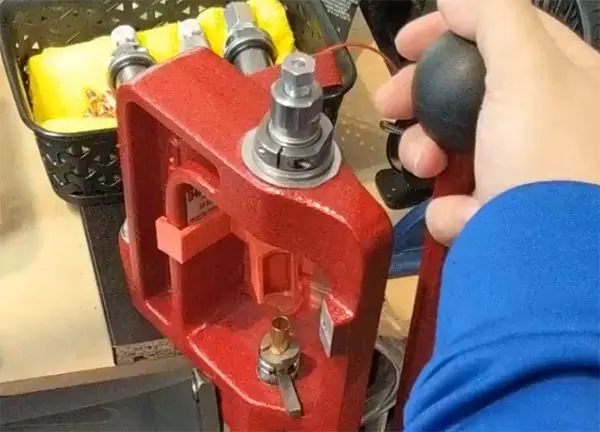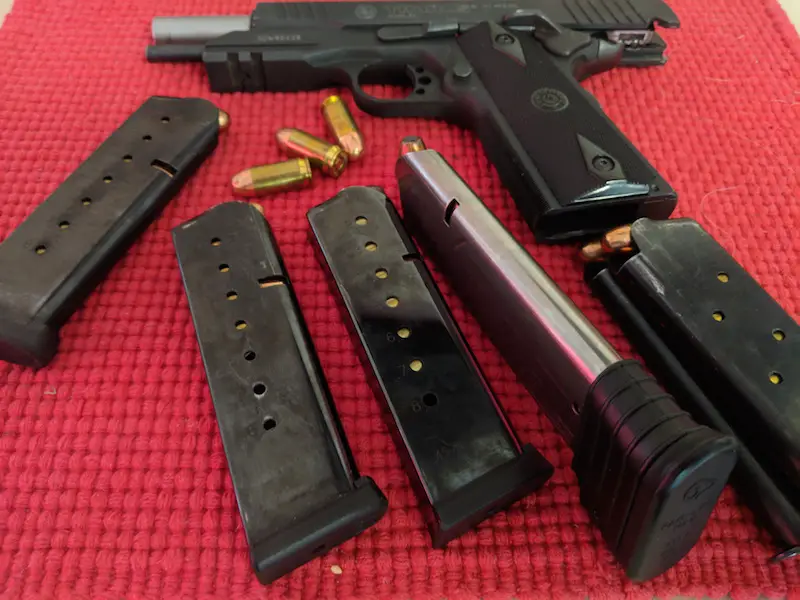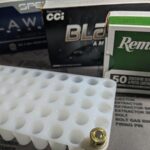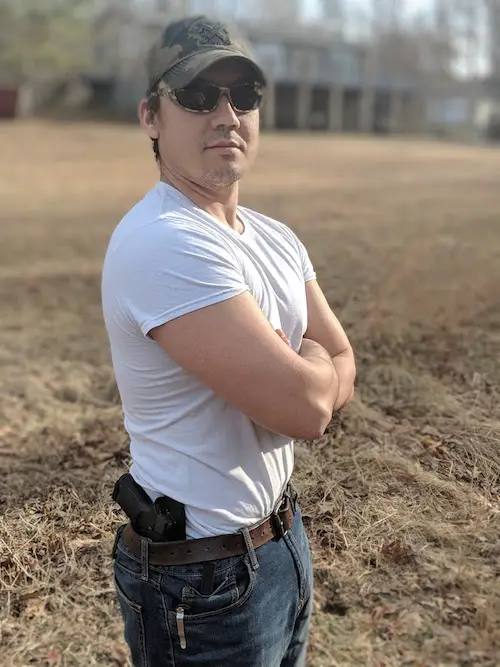Every shooter, at some point in their life, considers pressing their own ammunition. Usually the first question that comes up is; “Is it worth it to reload your own ammo?” When factory ammunition is readily available, it is probably not worth reloading your own ammo. Generally, the required man hours, initial investment costs for equipment, and raw material costs make pressing your own cartridges cost prohibitive.
However, there are plenty of reasons why someone would want to press their own ammunition. Limited access to factory ammunition is a big reason. Additionally, some may find the process therapeutic or nostalgic. Others simply want to learn and master the skill. Whatever the reason, today I’ll be covering the initial startup costs if you want to reload your own ammo.
Table of Contents
Calculating Your Break Even Point – Is It Worth It?
Prior to investing in reloading your own ammo, you should calculate your “break even” point. Unless your goal is skill development or therapy, you need to understand just how much money you’ll be spending to press your own ammo compared to buying factory cartridges.
First and foremost, you need to evaluate how much you would spend on factory ammunition. Market fluctuations in ammo prices will cause some variance. Additionally, how much ammo you buy at one time will also impact your final cost per round.
Next, you need to evaluate how much ammo you use. If you shoot frequently, your ammo consumption is going to be higher and subsequently your timeline to recoup the cost of reloading supplies will be shortened. On a long enough timeline, reloading your own ammo may be more cost effective. However, whether it’s 12 months or 12 years will depend on your shooting habits.
Initial Startup Cost To Press Your Own Ammo
The initial investment in reloading equipment is one of the biggest reasons it may not be worth it to reload your own ammo. Before you even press your first round, you need to clean the spent casings. Additionally, you’ll have to decap (de-prime) and resize the casing. Finally, you’ll need to measure your powder, add a new primer, seat your bullet and crimp to complete your cartridge.
Tools For Pressing Ammunition
All of the steps I’ve discussed thus far are an over-simplification of the process. However, each of these steps requires an investment in reloading equipment. This does not even cover the cost of raw materials required to reload your own ammo.
Way To Clean Spent Casings
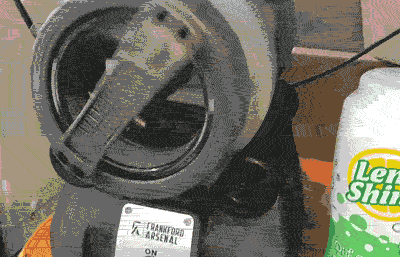
Regardless of the method you choose to clean your brass, you’ll need to invest in the equipment and supplies needed to prep your brass for reloading. Both wet and dry media require a tumbler. Tumblers kits run roughly $100 for dry media on Amazon.
Dry media tumbler kits, like the Frankford Arsenal Quick and EZ kit, include a bunch of materials you would otherwise have to buy individually. Conversely, you can get a wet media tumbler like the Frankford Arsenal Rotary tumbler on Amazon. Either way, you’re looking at spending between $100 – $150 on a tumbler unit with varying accessories.
Parts Dryer To Dry Cases For Reload
You could air dry the casings once they are done washing. However, it may not be worth it to reload your own ammo if you spend hours just waiting for your brass to dry. Therefore, you’ll need a parts dryer, which will run you about $70 – $100. The brass will still be hot even after the dryer finishes its cycle, so you’ll still have a little wait. But it’s much quicker than air drying!
Reloading Press
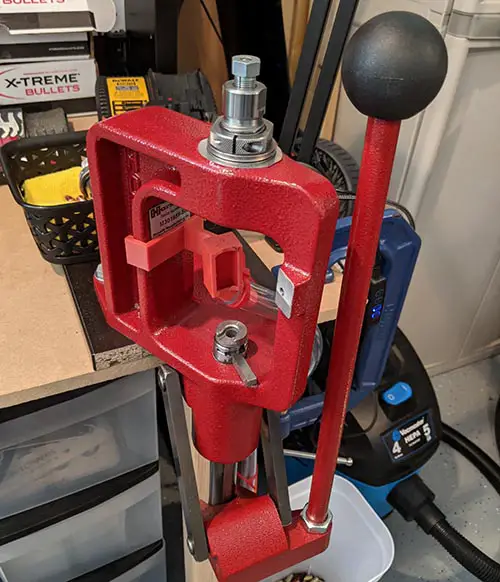
Next, we have the biggest cost in your reloading setup. Remember the math from your break-even point to help decide what type of press you need.
Single stage reloading presses are a bit slower but offer full control of the reloading process. Fancier auto-progressive and turret reloading presses are going to be more expensive. However, these types of presses make reloading more efficient by making it easier to swap between calibers or work on multiple reloads at once.
Regardless, you are going to spend from a couple hundred dollars to more than $1000 for a reloading press. What accessories (reloading dies, powder reservoirs, etc.) your press comes with will play into the cost. Remember to purchase a press according to your needs to make sure it is worth it to reload your own ammo.
Reloading Dies
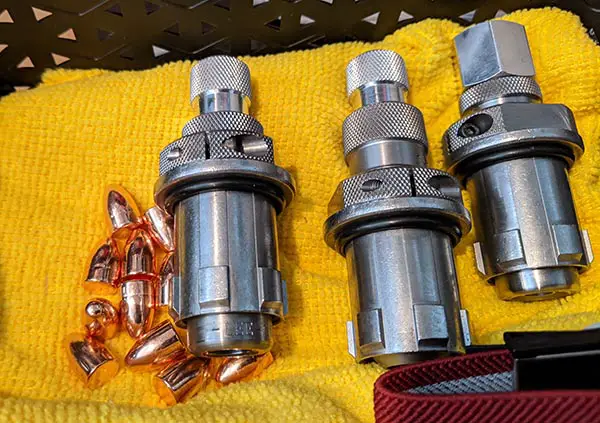
Another crucial piece to reloading are the dies. Dies are the life blood of preparation. In addition to resizing the brass and making it a uniform shape, they are also used to remove the old primer and flaring the casing.
Dies are dependent upon the caliber ammo you will be reloading. Therefore, the more calibers you plan to reload the more you will need to spend on the dies. If you shoot various calibers and plan to reload your casings, this initial cost is going to increase.
Different construction materials (carbide vs nitride) and die sizes cause a great variance in cost. Plan to spend about $50-$100 on reloading dies.
Powder Scale and Dispenser
Cartridges won’t do much without powder to make them go bang. Therefore, you need to invest in a powder scale to measure the correct grains. Additionally, you’ll want a reservior to house all of your powder and assist with measurement.
Calipers Are A Must For Reloading
Even the slightest variance in size when reloading your own ammo can cause issues. Being a a few millimeters off doesn’t seem like a problem. However, when you start to experience malfunctions due to improper cartridge size you’ll be singing a different tune.
Failing to properly measure the overall case length and width is a quick way to ensure it is NOT worth it to reload your own ammo. Therefore, you should invest in a good set of digital calipers. Hornady makes a digital and dial caliper, and this tool will run you between $25-$50.
Other Supplies For Reloading Ammo
What I’ve listed above are just the equipment needs for reloading your own ammunition. However, there are several reloading accessories that you’ll also need to acquire. If you aren’t super health-conscious, then you may be able to skimp on some of these items. But, be aware that reloading does require you to interact with hazardous materials.
Spent Casings

There are a few ways to get your hands on some brass casings. First, you can pick up your own brass from the range and toss it in your range bag or extra ammo can. Alternatively, you’ll need to find a retailer who sells used brass. Finally, you can pick up fresh unused brass casings.
Both caliber round and casing usage will impact cost. New brass is going to be the most expensive. Fired brass, usually sold as a mix of brands, will be cheaper. Therefore, at current prices, you can spend anywhere from $50 – $100 for 1,000 rounds of 9mm casings. Rifle casings will be more expensive.
Case Cleaning Media
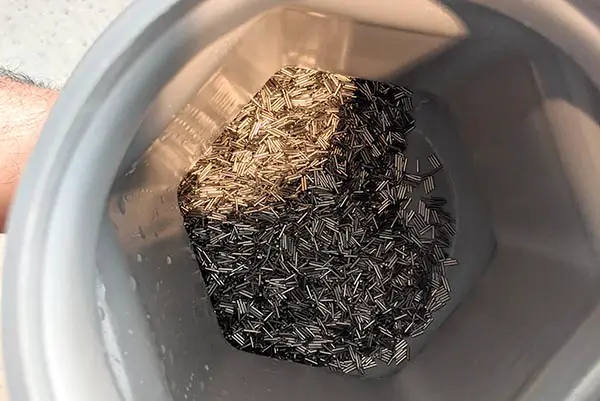
The type of tumbler you get to clean your casings will dictate what media you need. Wet tumblers will require stainless steel pins. Whereas, dry tumblers have a variety of media options from walnut shell media to corn cob media.
Admittedly, I don’t know much about dry media. However, I do know that over time dry tumbler media will build up a concentration of hazardous material that you may end up inhaling if you aren’t careful.
Contrarily, the stainless steel pins used in a wet tumbler tend to last longer as much of the waste from the brass gets washed down the drain.
Depending on which media type you get, you’ll be spending anywhere between $20-$40. Costs will vary depending on manufacturer and how much media you are buying.
Primers
Similar to the cost of brass, trying to cover every variation of primers is impossible. Naturally, primers follow the same trends in cost as casings. Large primers are going to cost more. Expect to pay between $30 – $50 roughly on 1,000 small pistol primers — if you can find them right now.
Bullets
Bullet cost is dependent on grain and caliber round. Additionally, round type (i.e. FMJ vs Hollow Point) will play a role in determining cost. Unlike previous ammo shortages, even reloading supplies are running dry. Currently, 115gr bullets of 9mm FMJ is going to run between $80 – $120.
Smokeless Powder
Smokeless powder is so inexpensive that it’s almost not worth mentioning — almost. However, the more rounds you plan to reload, the greater this cost will pile up. Like bullets, powder is measured in grains and re-inforces the need for a scale.
Gloves or Lead Remover Wash
Another small cost will be gloves to handle the used brass, bullets, and powder. These materials are hazardous. Alternatively, you can pick up a bottle of D-Lead on Amazon to wash your hands off after handling your reloading materials.
Other Cost Implications Of Reloading Ammo
Thus far, I’ve only spoken about the outgoing money for supplies and equipment. However, you’ll also need to allocate time and space to make it worth it to reload your own ammo.
How Much Space Do You Need To Reload?
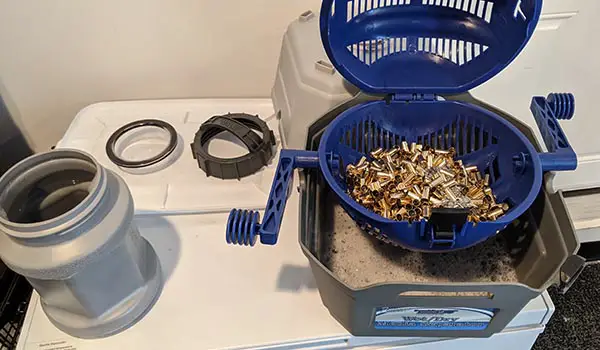
To reload your own ammo, you don’t need a ton of space. In fact, your reloading press and tumbler will take up the most space. A reloading setup could fit on a 5 foot by 3 foot workbench. However, you’ll also need space for bins containing casings at various stages and any surplus materials you have.
Ultimately, you’ll want to allocate the equivalent of a small office space for reloading. Alternatively, you could probably setup a reloading station in a corner of the garage if you are economical with your storage.
How Long Does It Take To Reload Ammo?
How long it will take you to reload ammo really depends on your setup and how OCD you are. Below is a rough outline of what goes into producing a reloaded cartridge:
- Clean brass – several hours up front
- Inspect brass for imperfections & head stamp for viability
- De-prime and resize the brass (and wash again if you choose)
- Expand or Flare the casings
- Prime and charge rounds
- Seat bullet and crimp
- Final inspection
Each of these steps assume you have done the appropriate measurements prior to performing the action. Another consideration for how long it will take to reload is your press setup. It averages about 1 minute per round to reload. Your results may vary, and you will get more efficient at reloading your own ammo as you gain experience.
Types Of Rounds Worth Reloading
Unless there is an ammo shortage, it is really only cost effective to reload larger caliber rifle rounds. However, if you’re an avid shooter and are diligent in collecting your brass you will eventually start saving money regardless of caliber size.
Purchasing an auto-progressive loader will help you be more efficient and cut down on your reload time. Another way to make up some of the cost is by collecting brass left by other shooters at your local range.
Parting Shots – Cost of Reloading
So what’s the verdict? Ultimately the cost of setting up a reloading station, including all of the accessories I’ve listed, is going to cost roughly $1000. You can save money on parts and equipment. But remember, you get what you pay for. Therefore, you’ll need to evaluate if you shoot with enough frequency to warrant such an investment.
Make sure to check back frequently as I’ll be doing a whole series on the process of reloading ammunition. Until then, if you found this article helpful please leave a comment or share with your network. It helps me out a ton.
